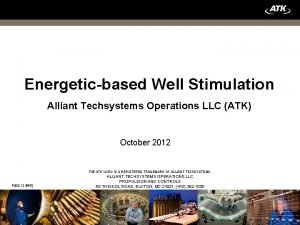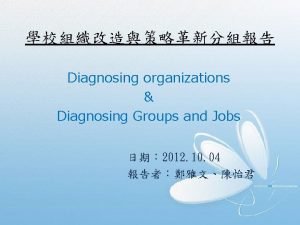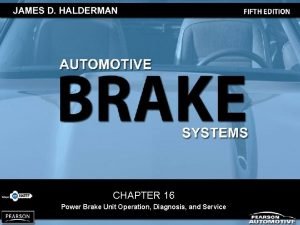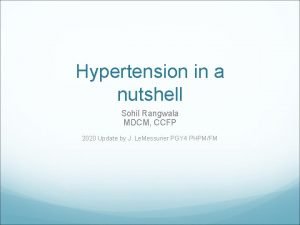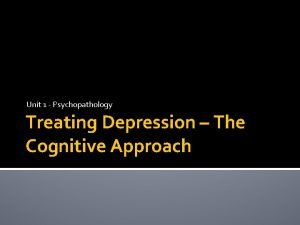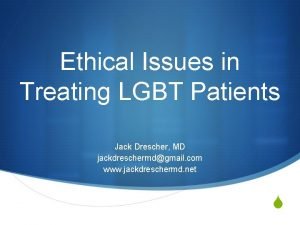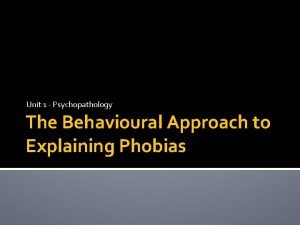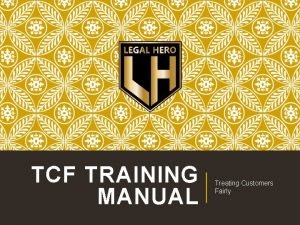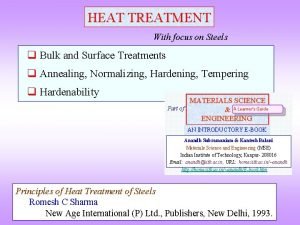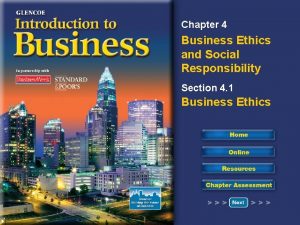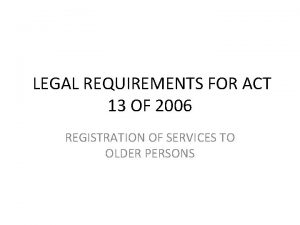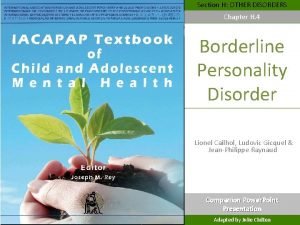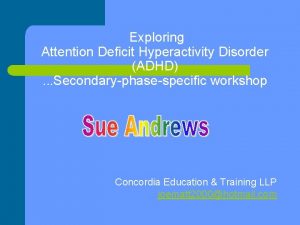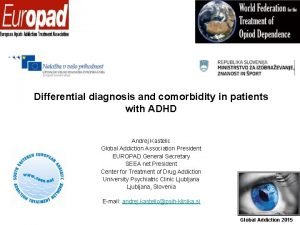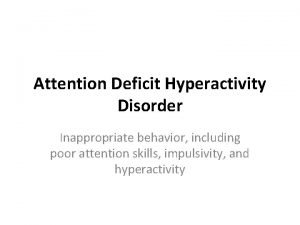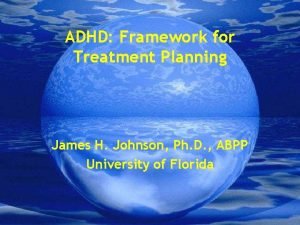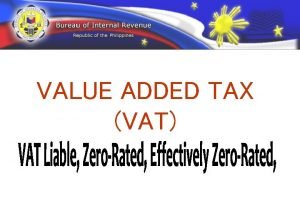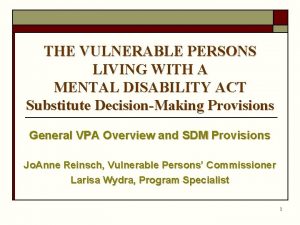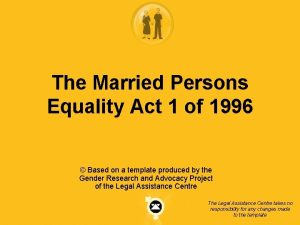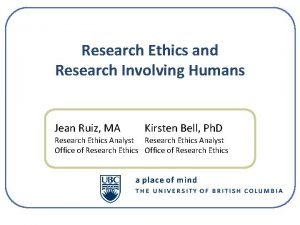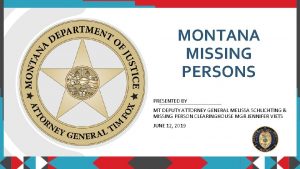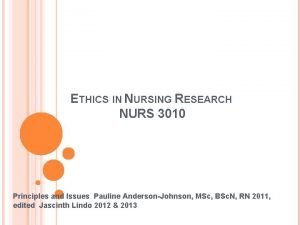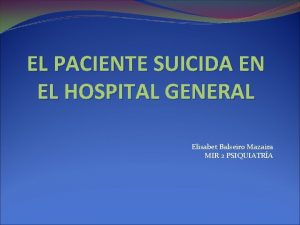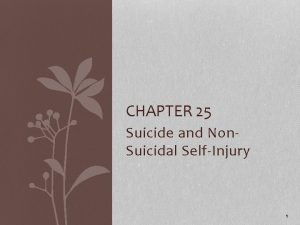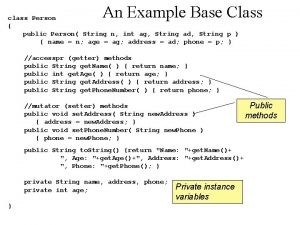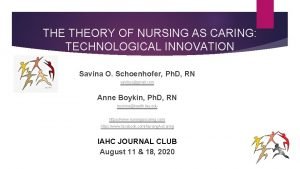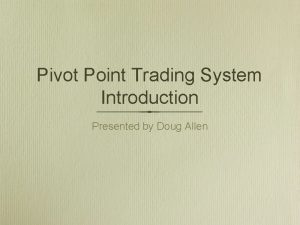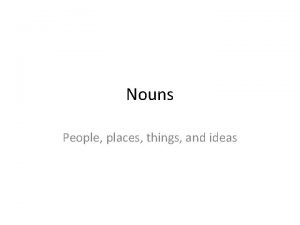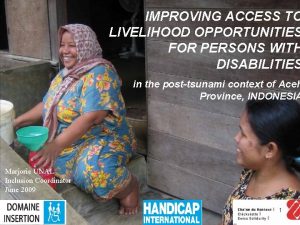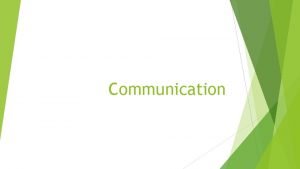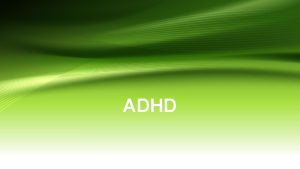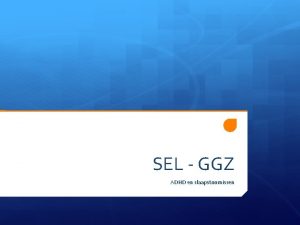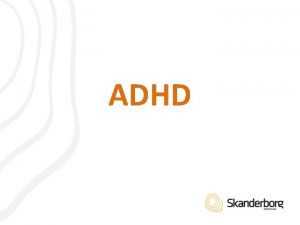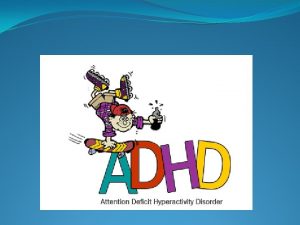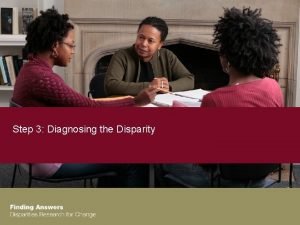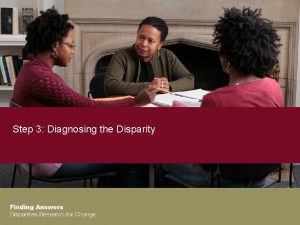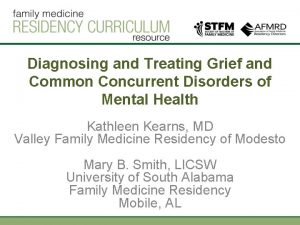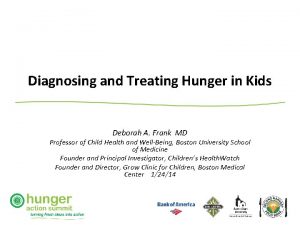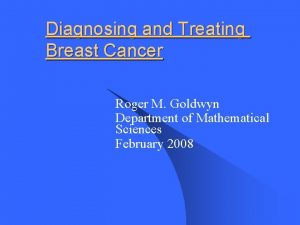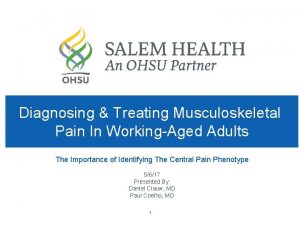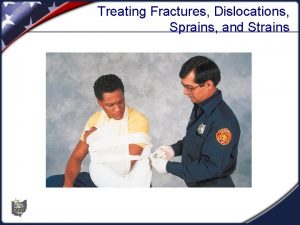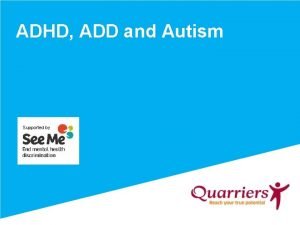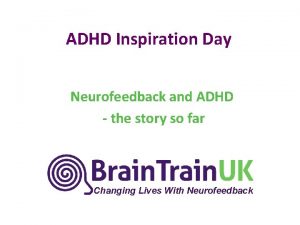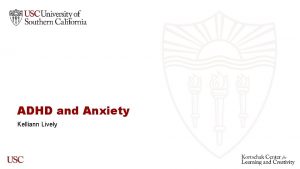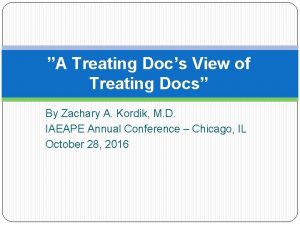Diagnosing and Treating Persons with ADHD Alliant Health














































- Slides: 46

Diagnosing and Treating Persons with ADHD Alliant Health Plans Dalton Golf and Country Club, Dalton, GA June 13, 2017 William L. Buchanan, Ph. D. , ABPP Board Certified in Clinical Psychology, American Board of Professional Psychology doc 4 add@mindspring. com North Point Psychology, LLC 3534 Old Milton Parkway Alpharetta, Georgia 30005 (678) 624‐ 0310, ex. 0 fax: (678) 624‐ 0258 www. North. Point. Psychology. com

What is ADHD? • Attention Deficit Hyperactivity Disorder • ADHD is a biological, neurological, mostly genetic condition that people are born with, live with, and die with. • There is no cure – it must be managed (similar to diabetes). • ADHD is not acquired and it is not caused by inadequate or bad parenting (although parenting can make the symptoms worse or help make the symptoms more manageable). • For the vast majority of people with ADHD, it continues into adulthood. 2

ADHD Statistics • Worldwide prevalence is 4. 5 to 5. 5% of all children and 3. 5 to 4. 5% of all adults have ADHD. • Approximately 9. 5% of U. S. children 4 ‐to 17 years of age (6. 4 million) have been diagnosed with ADHD as of 2011 (CDC). • 40 to 60% of all ADHD individuals are undiagnosed. • Males (13. 2%) are more likely than females (5. 6%) to be diagnosed with ADHD. (Ratio: about 2. 4 to 1). 3

ADHD doesn’t just run in families – it gallops! 4

ADHD Statistics 40% of children who have ADHD have at least one parent who has ADHD 57% of individuals with ADHD will have offspring with ADHD. 50% of children who have ADHD also have sleep problems. Parents of a child who has ADHD are three times as likely to separate or divorce as parents of non‐ADHD children • Teenagers with ADHD have almost four times as many traffic citations as their non‐ADHD peers. • Teens with ADHD have four times as many car wrecks and are seven times more likely to have a second accident. • Over 10, 000 scientific papers and over 100 textbooks have been written on ADHD. • • 5

DSM-5 Inattention Criteria for ADHD • 1. Inattention: Six or more symptoms of inattention for children up to age 16, or five or more for adolescents 17 and older and adults; symptoms of inattention have been present for at least 6 months, and they are inappropriate for developmental level: • Often fails to give close attention to details or makes careless mistakes in schoolwork, at work, or with other activities. • Often has trouble holding attention on tasks or play activities. • Often does not seem to listen when spoken to directly. • Often does not follow through on instructions and fails to finish schoolwork, chores, or duties in the workplace (e. g. , loses focus, side‐tracked). • Often has trouble organizing tasks and activities. • Often avoids, dislikes, or is reluctant to do tasks that require mental effort over a long period of time (such as schoolwork or homework). • Often loses things necessary for tasks and activities (e. g. school materials, pencils, books, tools, wallets, keys, paperwork, eyeglasses, mobile telephones). • Is often easily distracted 6 • Is often forgetful in daily activities.

DSM-5 Hyperactivity / Impulsivity Criteria for ADHD • 2. Hyperactivity and Impulsivity: Six or more symptoms of hyperactivity‐impulsivity for children up to age 16, or five or more for adolescents 17 and older and adults; symptoms of hyperactivity‐impulsivity have been present for at least 6 months to an extent that is disruptive and inappropriate for the person’s developmental level: • Often fidgets with or taps hands or feet, or squirms in seat. • Often leaves seat in situations when remaining seated is expected. • Often runs about or climbs in situations where it is not appropriate (adolescents or adults may be limited to feeling restless). • Often unable to play or take part in leisure activities quietly. • Is often "on the go" acting as if "driven by a motor". • Often talks excessively. • Often blurts out an answer before a question has been completed. • Often has trouble waiting his/her turn. 7 • Often interrupts or intrudes on others (e. g. , butts into conversations or games).

DSM-5 Presentations for ADHD Based on the symptoms, three presentations of ADHD can occur: • Combined Presentation (CP): if enough symptoms of both criteria inattention and hyperactivity‐impulsivity were present for the past 6 months • Predominantly Inattentive Presentation (PIP): if enough symptoms of inattention, but not hyperactivity‐impulsivity, were present for the past six months • Predominantly Hyperactive-Impulsive Presentation (PHIP): if enough symptoms of hyperactivity‐impulsivity but not inattention were present for the past six months. (Usually very young children) • Because symptoms can change over time, the presentation may change over time as well. (No longer “Types”) • Specify: Mild, Moderate, Severe. 8

Proposed Diagnostic Criteria of Adult ADHD Six or more which have persisted for six months or more that is maladaptive and inconsistent with developmental level: 1. Often easily distracted by extraneous stimuli. 2. Often make decisions impulsively. 3. Often has difficulty stopping activities or behavior when they should do so. 4. Often starts a project or task without reading or listening to directions carefully. 5. Often shows poor follow through on promises of commitments they make to others. 9

Proposed Criteria for Adult ADHD - cont. 6. Often has trouble doing things in their proper order or sequence. 7. Often more likely to drive a motor vehicle much faster than others (excessive speeding). (If person has no driving history, substitute: “Often has difficulty engaging in leisure activities or doing fun things quietly. ”) 8. Often has difficulty sustaining attention in tasks or leisure activities. 9. Often has difficulty organizing tasks and activities. Barkley, 2008. 10

Causes of ADHD • Underactivity in frontal lobes • Reduced cerebral blood flow to frontal and striatal regions • Smaller prefrontal lobe and striatal regions, especially on right side (Hynd and others). • “The striatum, together with the hippocampus, is one of the most vulnerable regions in the brain” (Journal of Neurotrauma, March 2000). Note: Attention and EF in elderly with dementia are “first to go. ” Buchanan’s pondering: Are attention & EF most fragile abilities? • Genetics: ADHD risk of offspring with ADHD is 57% • Monozygotic twins 81% concordance rate; Dizygotic twins 29%. 11

DSM-6 (20? ? ) Executive Function Disorder? Executive Function Deficit Disorder? 12

Executive Functions • Most common definition: “Those mental abilities needed to sustain problem solving toward a goal. ” • “Those capabilities that enable a person to engage successfully in independent, purposeful, selfserving behavior. ” Lezak, 1995, p. 42 • Focusing (Barkley: Pre‐EF) • Focused and Sustained Attention • Inhibition • Impulse Control • Initiation / Activation • • Effort / Persistence Planning Organizing Problem Solving Working Memory Managing emotions and frustrations Monitoring • Adjusting actions based on environmental feedback • Time management • Past, Present, Future • Completing / Follow Through 13

30% Rule The executive functions of ADHD children lag behind their same age peers by about 30%. So a 10 year old child with ADHD has the executive functions ability of the average 7 year old child. (2013, p. 37) Age : EF 6: 4 9: 6 10 : 7 12 : 8 15 : 10 18 : 12 20 : 14 24 : 16 25 : 17 28 : 19 Buchanan’s pondering: Since the frontal lobe continues to develop until the mid‐ to late‐ 20 s, is the maximum EF for an ADHD adult about equal to the EF of a 19 year old? Buchanan’s pondering: If 30% is Average (Moderate), is Mild ADHD = 10 to 20%? is Severe ADHD = 40 to 50%? 14

ADHD and Time, according to Barkley: “The inability to inhibit behavior and consider the later consequences of one’s actions. ” (2013, p. 35) “Altered sense of time. ” (2013, p. 58) “Nearsighted to the future. ” (2013, p. 58) “Blind to time or the future. ” (2013, p. 58) “Future Neglect Syndrome” (2013, p. 58) “A disorder of future-directed behavior. ” (2013, p. 26) “Temporal myopia or time blindness. ” (2015, p. 422) “Without a sense of the future, it is hard to defer gratification. ” (2013, p. 59) 15

Time Blindness: Prisoner of the Now “What is the wise thing to do? ” Specifically: • “In light of my past experience, current circumstances, and future hopes and dreams, what is the wise thing for me to do? ” • This question does not compute in the ADHD brain! From: Andy Stanley North Point Community Church “Ask It” Series January 5, 2014 16

Time Blindness: Prisoner of the Now • Time Blindness is being blind to hindsight, blind to foresight, and only seeing the “now. ” • Individuals (especially children) with ADHD are “Prisoners of the Now. ” • Hard to “shift gears, ” i. e. , transition from one activity to another. Paradoxically, they can get “hyper‐‐focused” – “needs a crowbar. ” • ADHD individuals need external references to time. (2013, p. 162) 17

Comorbidity Oppositional Defiant Disorder > 50% (range: 45% to 84%) Conduct Disorder 15% Anxiety Disorders 25 to 50% Depression 33% (25% of depressed children have ADHD) Depression + ADHD + ODD/CD is highest risk for suicide. Learning Disability 35 to 40% OCD (not higher in ADHD, but 51% children, 36% adolescents with OCD have ADHD) Tics / Tourette’s Disorder 10% (50 to 70% of people with Tics have ADHD) “Contrary to clinical lore, stimulant treatment did not lead to an increase in tics. ” (2015, p. 154) • Autism Spectrum Disorder (30 to 80% of ADS have ADHD) • Addictions – ADHD alone is a risk factor. Meta‐analysis stimulants treatment “does not increase risk of later drug abuse, but may not provide a protective factor. ” 18 • •

19

5 Part Assessment of ADHD 1) 2) 3) 4) 5) 5 measures of Short‐term Focused Attention Continuous Performance Tests (CPTs) for Sustained Attention Ratings Scales for ADHD and Executive Functioning Clinical Interviews – patient and collaterals Developmental, Medical, Academic and Family History However, since the more than 80% of people with ADHD have at least one other DSM diagnosis, the best assessment is a full psych evaluation that includes emotional and personality tests, and for youth (pre. K to college), intellectual and academic testing (30 to 40% will have a learning disability). 20

21

22

23

24

25

26

27

28

29

30

31

32

33

34

Empirically Supported, Promising and Unsupported Treatments of ADHD • Chapter 13 in Science and Pseudoscience in Clinical Psychology – Second Edition edited by Scott Lilienfield, Lynn & Lohr (2015) • Empirically Supported ‐ Stimulants, Behavior Therapy, Combination, some non‐stimulants • Promising – Self directed Interventions, Peer directed Interventions, Neurofeedback, Cognitive, Dietary, Nutritional • Unsupported Treatments – Antidepressants, Restrictions of sugar and sweeteners, Sensory Integration Interventions, Play Therapy (individual child therapy) 35

Stimulants and the Brain • “…treating ADHD with medication may result in a greater normalization of brain development, known as a “neuroprotective effect”…, than if the medications had never been used. This makes some sense given that clinically effective doses of stimulants increase brain activity in the very • Barkley: “ 29 studies to date have regions that have been found to be noted that brain development of underactive in the various functional children treated with stimulant neuroimaging studies…(i. e. , caudate, medication is closer to that of controls prefrontal cortex, cingulate and who do not have ADHD than to cerebellum). ” (2015, p. 367‐ 368) children with ADHD never treated with stimulants. ” (2015, p. 367) 36 • ADHD involves widespread frontal hypoactivity • Frontal‐striatal‐cerebellar regions underlie ADHD • Striatum: Caudate nucleus, Putamen

Holding people with ADHD accountable Barkley (2013, p. 70): “Interestingly, while this understanding of ADHD should evoke empathy, it does not mean that we should stop holding children with ADHD accountable for their behavior. Those with ADHD are not insensitive to the consequences of their actions, but they have trouble connecting consequences with their own behavior because of the time delay between the behavior and the important delayed consequences of those actions. This means that to help those with ADHD we must make them more accountable, not less so. We must devise consequences that are more immediate, more frequent, and more salient than they would normally be in any given situation. Thus we can help them compensate for their deficit and live more normal, functional lives. ” 37

4 Things All Children with ADHD Need 1. Structure 2. Routine 3. Consistency 4. Calmness In oth er wo rds … 1. Calm Structure 2. Calm Routine 3. Calm Consistency 38

Getting emotional with a person with ADHD is like trying to put out a fire by pouring gasoline on it. 39

40

Mary Solanto CBT for Adult ADHD (2011) • • Book includes treatment manual – 12 Sessions Session 1 – Making peace with the diagnosis and committing to action Sessions 2 to 6 – Time Management Sessions 7 to 9 – Getting Organized Sessions 10 to 11 – Projects Session 12 – looking to the future Optional session – Getting to bed, getting up and getting to work on time 41

Dr. Mary Solanto – Mantras • “Complete large projects by dividing it into smaller, more manageable parts. ” • “If you’re having trouble getting started, then the first step is too big!” • “Do all things in order of priority. ” • “Out of sight, out of mind. ” • “A place for everything. ” • “Everything in it’s place. ” • “What you don’t do today won’t go away – it will just be much harder tomorrow!” “Commandments” of Planner Use • Thou shalt have one planner and one planner only. • Thou must carry thy planner with thee at all times. • Thou shalt enter every appointment and task into thy planner. • Thou shalt consult thy planner every morning, every midday, and every evening!” 42

Unsupported Treatments of ADHD Antidepressants – although limited effectiveness found, all carry black box warning for suicide, slow onset, requires daily dosing – “thus, there is insufficient justification for using. ” Restrictions of sugar and sweeteners Sensory Integration Interventions (used by 90% of OTs) Play Therapy (don’t use with externalizing disorders) 43

Russell Barkley ADHD References • (2013). Taking Charge of ADHD – Third Edition. New York: Guilford. • (2010). Taking Charge of Adult ADHD. New York: Guilford. • (2016). When an Adult You Love Has ADHD: Professional Advice for Parents, Partners, and Siblings. Washington, DC: American Psychological Association Press. • (2015). Attention Deficit Hyperactivity Disorder: A Handbook for Diagnosis and Treatment – Fourth Edition. New York: Guilford. • (2016). Managing ADHD in School – The Best Evidence-Based Methods for Teachers. New York: PESI Publishing and Media. • http: //www. russellbarkley. org/factsheets/ADHD_School_Accommodations. pdf 44

Russell Barkley Treatment References • (2013). Your Defiant Child – Second Edition. New York: Guilford. • (2013). Defiant Children - A Clinician's Manual for Assessment and Parent Training - Third Edition. New York: Guilford. • (2013). Your Defiant Teen – Second Edition. New York: Guilford. With Arthur Robins. • (2014). Defiant Teens: A Clinician's Manual for Assessment and Family Intervention – Second Edition. New York: Guilford. With Arthur Robins. 45

Adult ADHD References • Russell Barkley. (2016). When an Adult You Love Has ADHD: Professional Advice for Parents, Partners, and Siblings. Washington, DC: American Psychological Association Press. • Russell Barkley. (2010). Taking Charge of Adult ADHD. New York: Guilford. • Gina Pera (2008). Is it you, me or Adult ADHD? Stopping the Roller Coaster when Someone you love has ADHD. San Francisco: 1201 Alarm Press. • Russell Ramsey and Anthony Rostain (2015). The Adult ADHD Tool Kit. NY: Routledge. • Steven Safren, Susan Sprich, Carol Perlman, and Michael Otto. (2015). Mastering Your Adult ADHD: A Cognitive-Behavioral Treatment Program. NY: Oxford. • Mary Solanto. (2011). Cognitive-Behavioral Therapy for Adult ADHD: Targeting Executive 46 Dysfunction. NY: Guilford.
 One persons trash is another persons treasure
One persons trash is another persons treasure Alliant wrap x
Alliant wrap x Alliant techsystems operations llc
Alliant techsystems operations llc Comprehensive model for diagnosing organizational systems
Comprehensive model for diagnosing organizational systems Brakes unit 3 quiz 1
Brakes unit 3 quiz 1 Standardized office bp measurement
Standardized office bp measurement Diagnosing hypertension
Diagnosing hypertension Yodsawalai chodpathumwan
Yodsawalai chodpathumwan Boutonniere and swan neck deformity
Boutonniere and swan neck deformity Diagnosing your cultural intelligence
Diagnosing your cultural intelligence Chapter 24 lesson 2 preventing and treating stds
Chapter 24 lesson 2 preventing and treating stds Tumor treating fields mechanism of action
Tumor treating fields mechanism of action Cognitive approach to treating depression
Cognitive approach to treating depression Ethical issues in treating lgbt patients
Ethical issues in treating lgbt patients Mowrer's two-process model of phobia
Mowrer's two-process model of phobia Treating customers fairly training
Treating customers fairly training Wholesale heat treating
Wholesale heat treating Chapter 4 ethics and social responsibility
Chapter 4 ethics and social responsibility Dq98 form
Dq98 form Night structure
Night structure Bpd comorbidity
Bpd comorbidity Caffeine and adhd
Caffeine and adhd Adhd or bpd
Adhd or bpd Difference between adhd and add
Difference between adhd and add Sample treatment plan goals and objectives for adhd
Sample treatment plan goals and objectives for adhd Liable
Liable The vulnerable persons living with a mental disability act
The vulnerable persons living with a mental disability act Married persons equality act 1 of 1996
Married persons equality act 1 of 1996 The principle of respect for persons
The principle of respect for persons Missing persons montana
Missing persons montana Holy trinity explained
Holy trinity explained The principle of respect for persons
The principle of respect for persons The principle of respect for persons
The principle of respect for persons Anticonvulsivantes
Anticonvulsivantes Ctip for acquisition and contracting professionals
Ctip for acquisition and contracting professionals The sad persons scale
The sad persons scale Class of persons examples
Class of persons examples 3. persons fortæller
3. persons fortæller Famous persons
Famous persons Dance of caring persons
Dance of caring persons A person's essential self is called
A person's essential self is called Persons pivots
Persons pivots Nouns ideas persons places things
Nouns ideas persons places things Wilbur zelinsky ap human geography
Wilbur zelinsky ap human geography Livelihood opportunities for persons with disabilities
Livelihood opportunities for persons with disabilities Persons in lpscs careers must effectively communicate with:
Persons in lpscs careers must effectively communicate with: Exchange of ideas between two or more persons is
Exchange of ideas between two or more persons is


